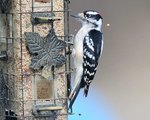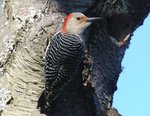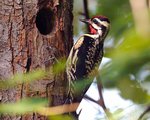 Narrowsburg
NarrowsburgLight Rain Fog/Mist, 43°
Wind: 8.1 mph
 Narrowsburg
NarrowsburgWhen March arrives and there are any trees at all around, many species of birds get an early start on breeding by trying to court a mate by means of calls. Calling birds are very apparent on even a …
Stay informed about your community and support local independent journalism.
Subscribe to The River Reporter today. click here
This item is available in full to subscribers.
Please log in to continue |



When March arrives and there are any trees at all around, many species of birds get an early start on breeding by trying to court a mate by means of calls. Calling birds are very apparent on even a short walk outdoors. If you listen, you can make out the tapping of woodpeckers as well. Not the slow, quieter taps of a woodpecker foraging for insects underneath the bark of a dead tree; the sounds of these woodpecker taps are fast and loud. In the language of woodpeckers, this is called “drumming.”
The purpose of a woodpecker drumming is twofold; the first reason is for courtship, and the second is to announce to other woodpeckers that the territory is occupied. A drum can last a second or two at the rate of several hundred taps per minute, depending on the species. Many species do a follow-up drum a few seconds after the first drum. Woodpeckers will try to find a hollow log or limb that amplifies the sound of its drumming, the noisier, the better. These percussionists will even use metal objects to send their messages of love. Those folks who have metal siding or roofs and had a woodpecker drum on the sheet metal first thing in the morning can vouch for how loud it is.
Experienced birders can tell what species of woodpecker they hear by listening to the drum. A downy woodpecker, for example, has a fast cadence at 700 tpm (taps per minute). A red-bellied woodpecker is slightly slower, but close enough to the downy woodpecker that it may be difficult to tell them apart. A yellow-bellied sapsucker starts out with rapid but erratic taps and trails off with slower paced tapping which can last a few seconds.
Woodpeckers also have vocal calls used for courtship and territorial defense that are distinctive, but the drumming can be heard for several hundred yards on a quiet morning. There are several good guides for woodpeckers available on print and online. To listen to calls and drumming, my favorite, from Cornell University, is https://www.allaboutbirds.org/guide/search/.
Comments
No comments on this item Please log in to comment by clicking here